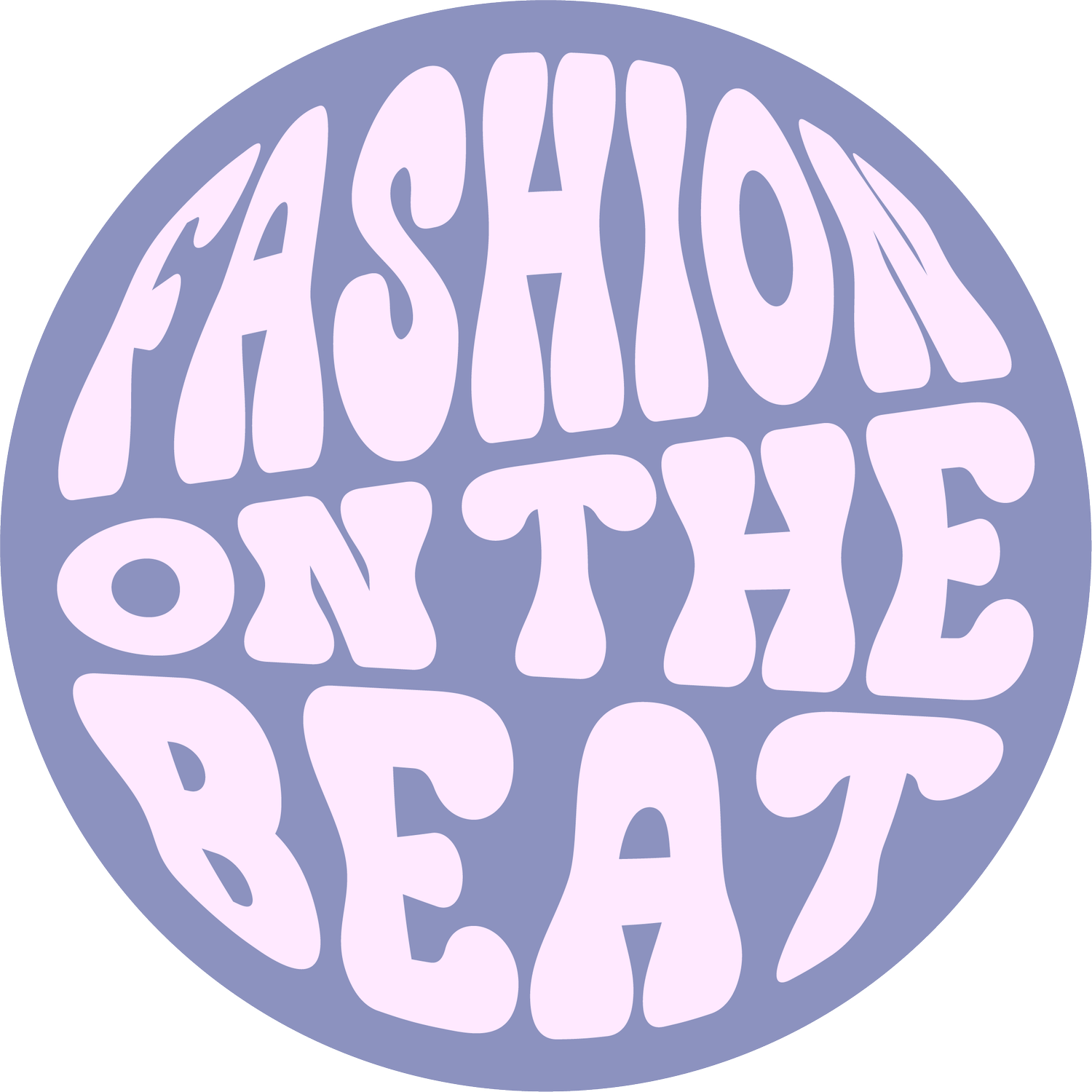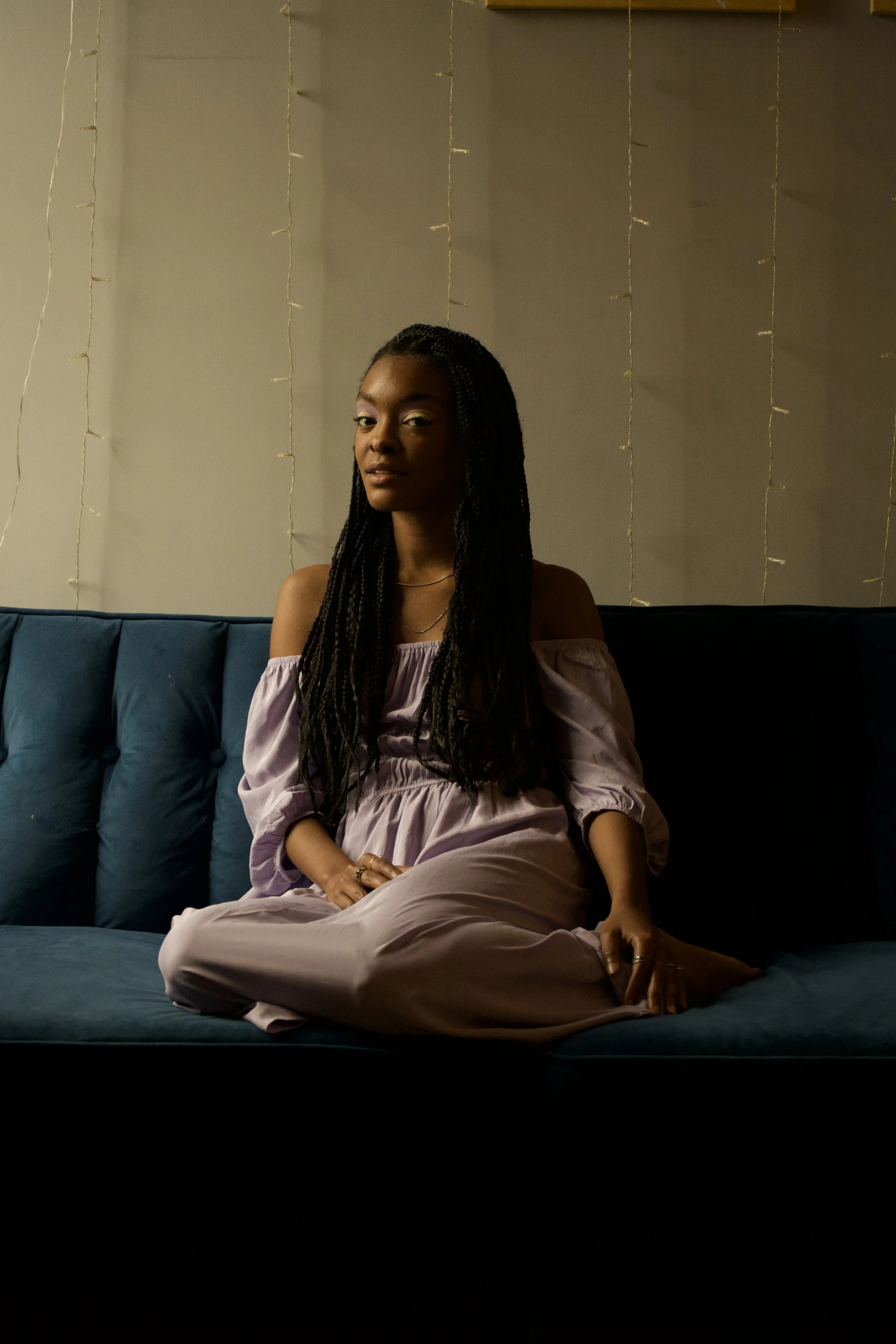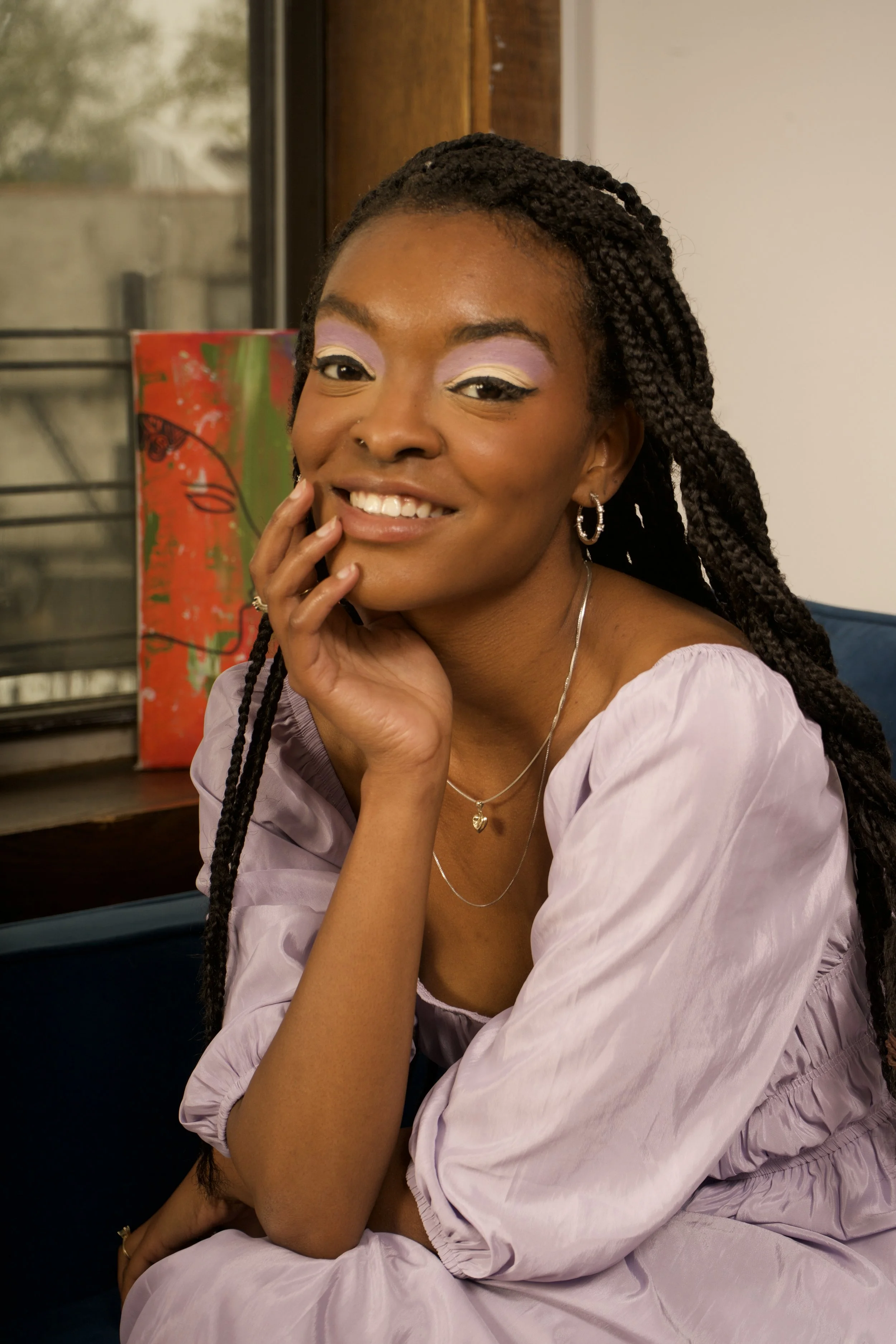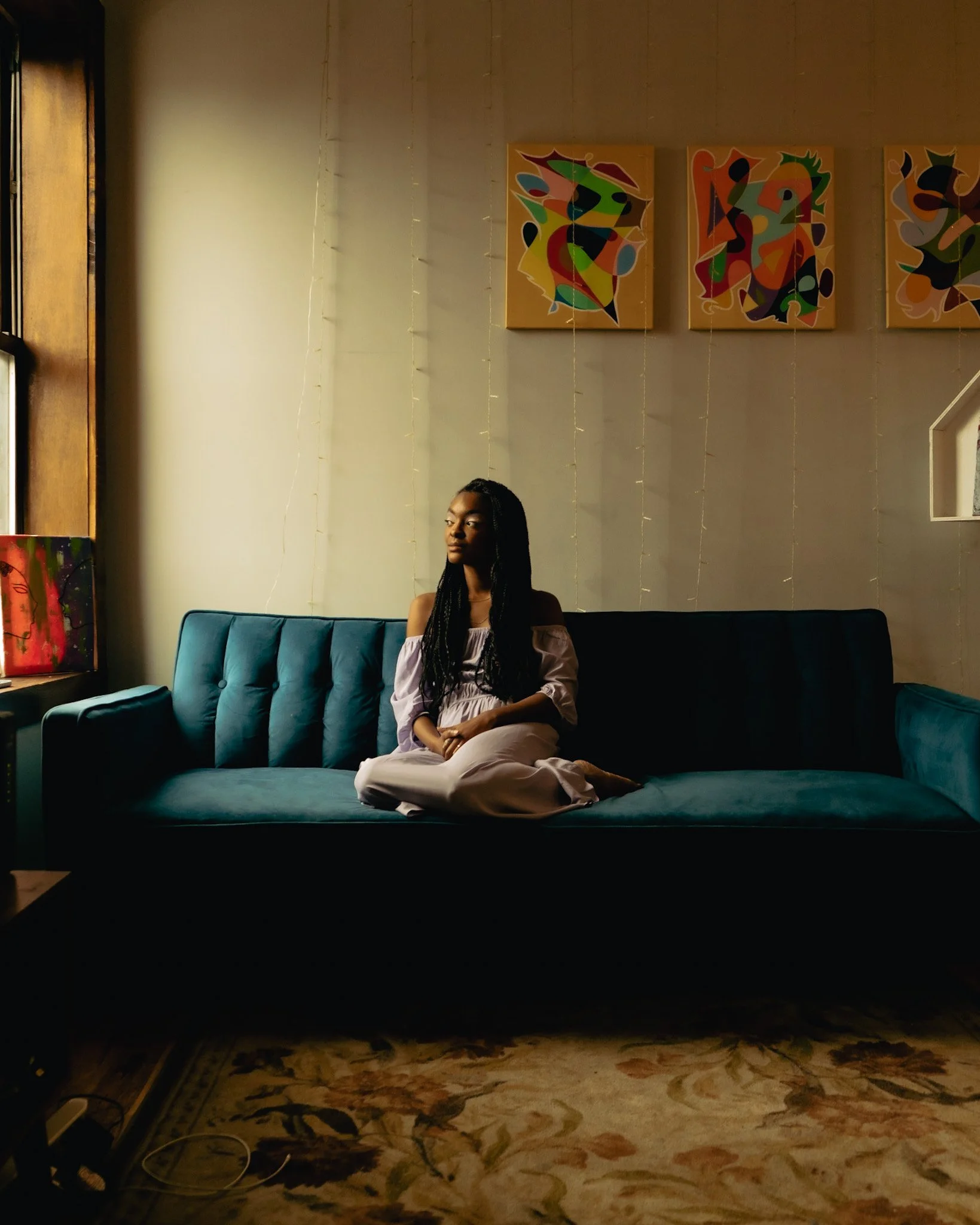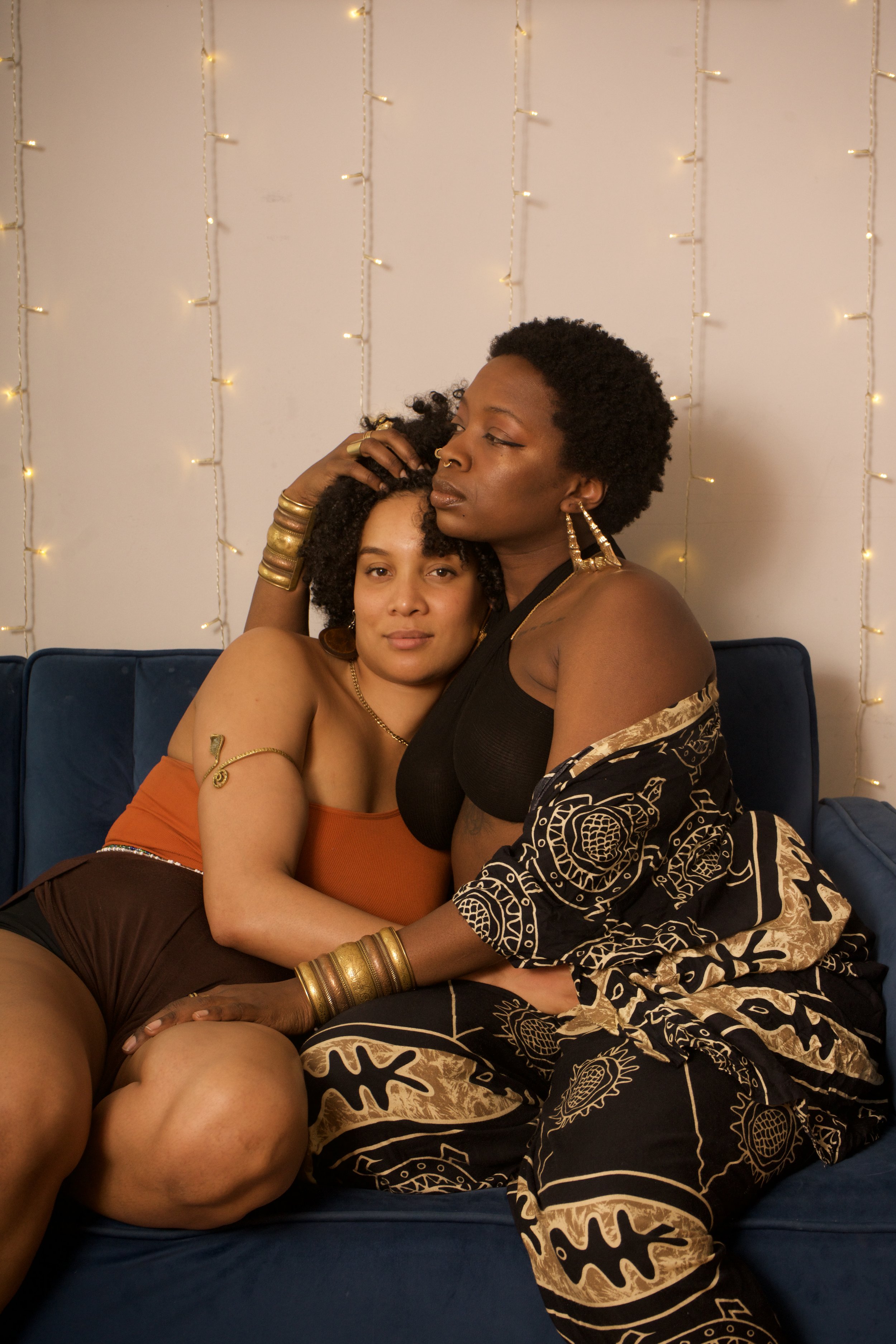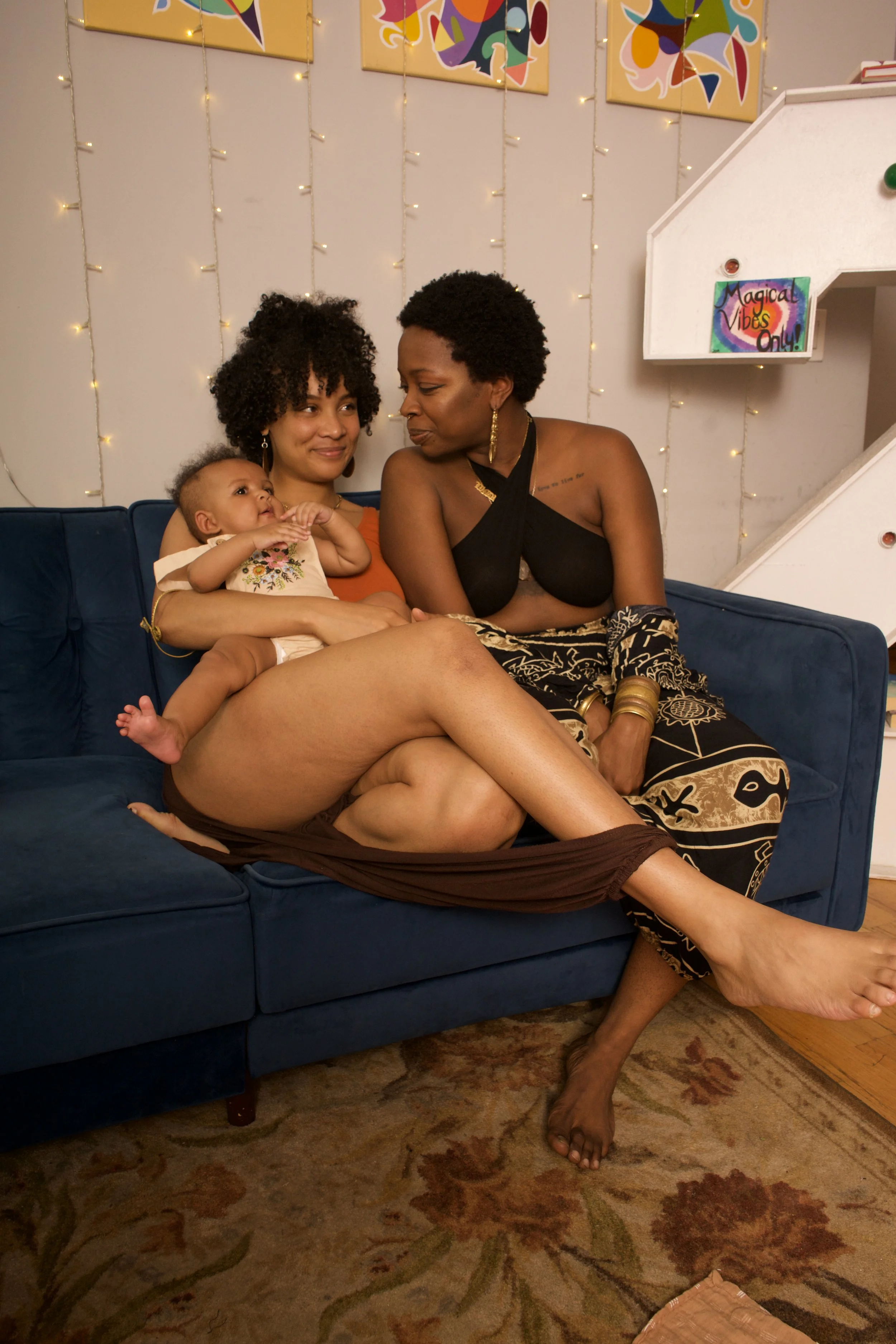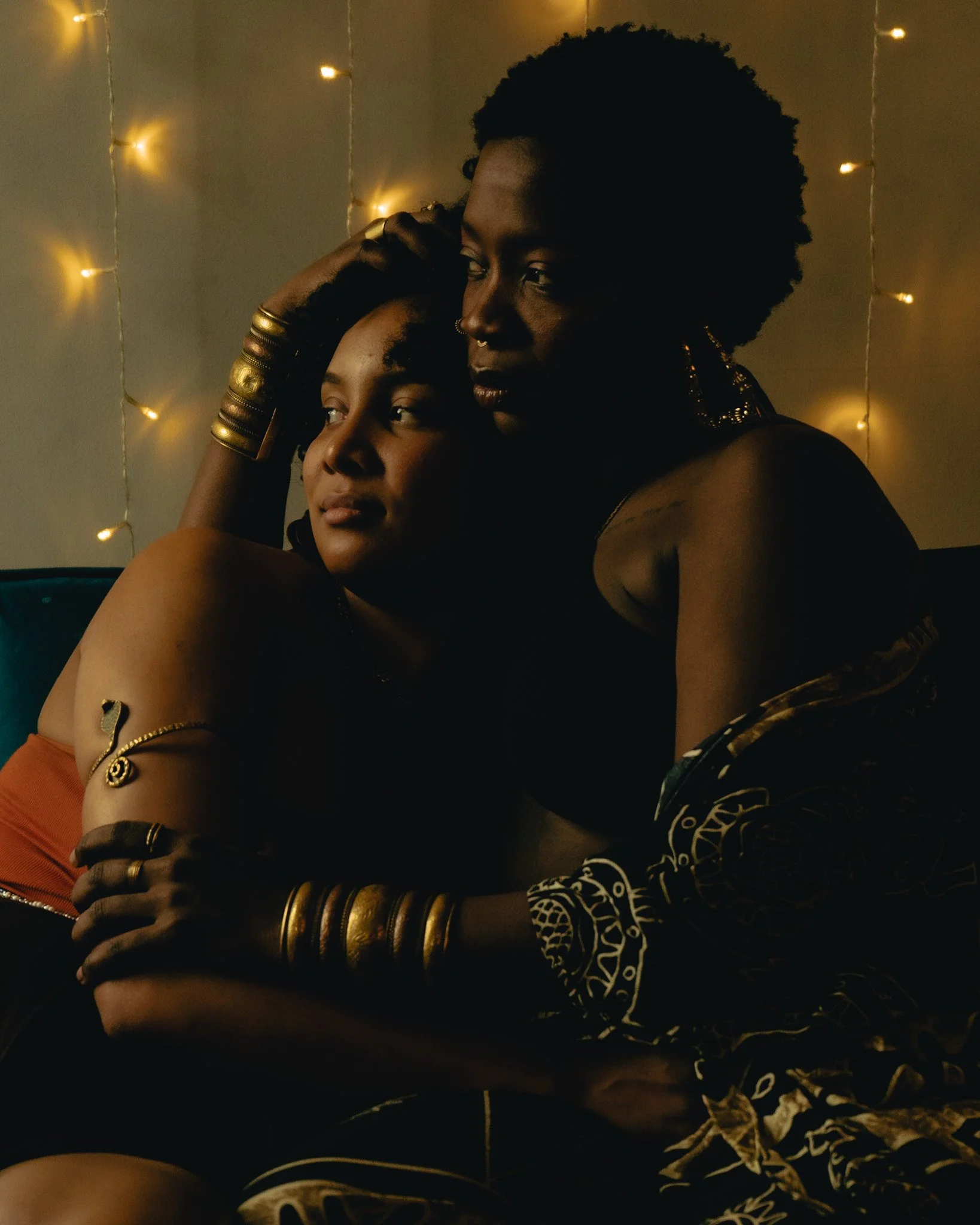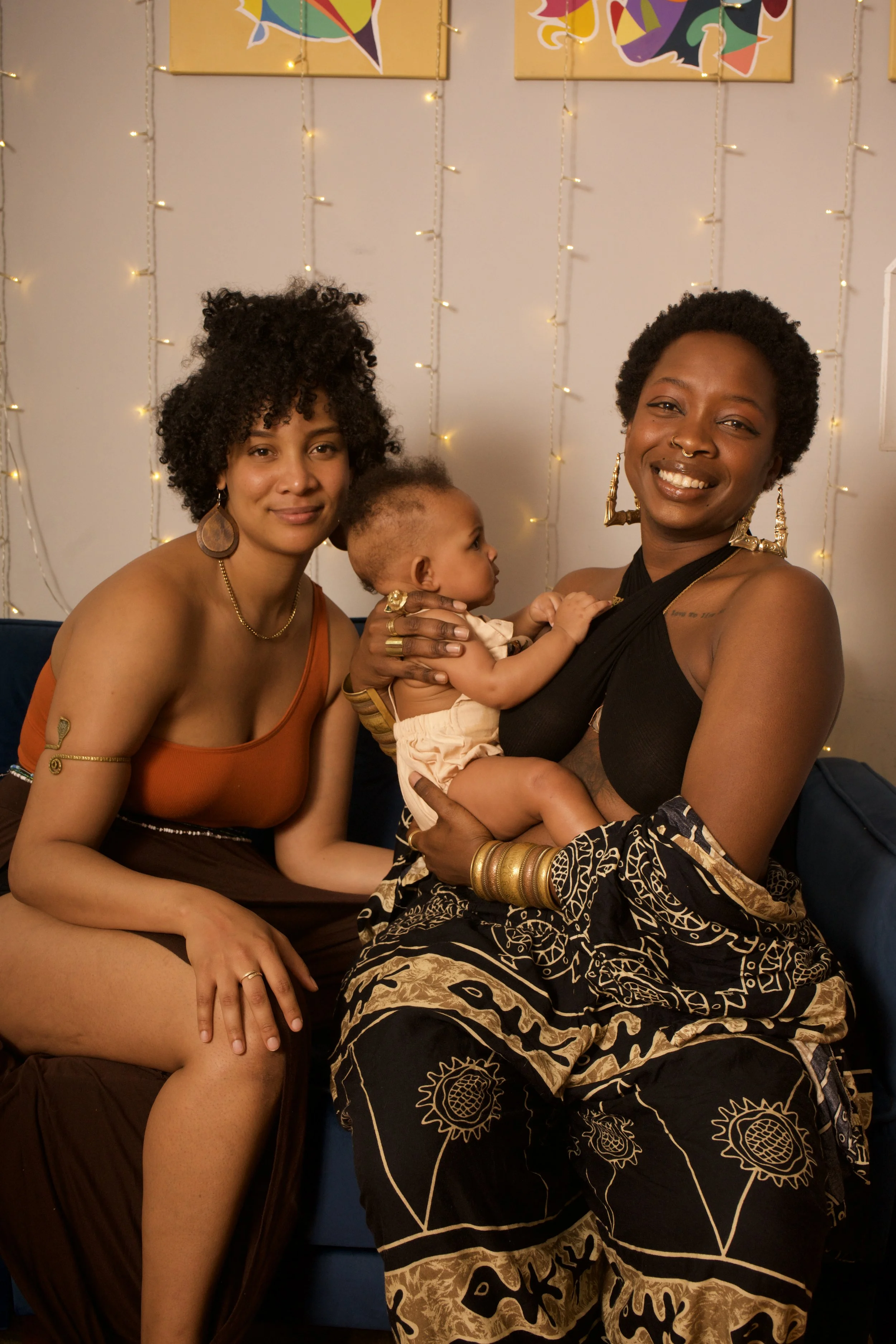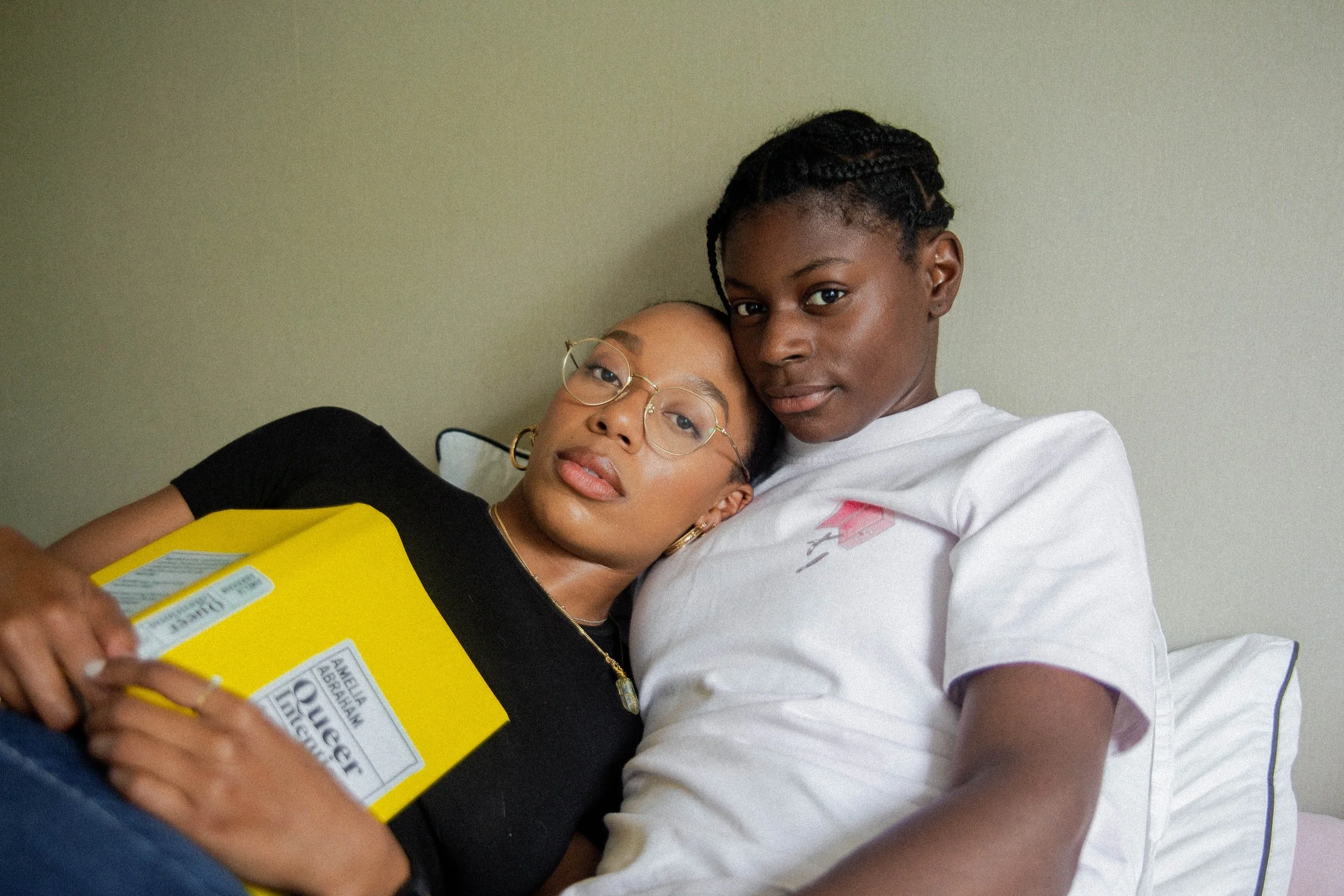
Black Queer Love Joy
Here following an analysis of the four words we’re going to use this month: Black, Queer, Love, and Joy.
Black: it’s important to represent the desire of being loved, to give, and to show love in Black communities, on a global scale. For the purpose of this monthly themed campaign (along with its complexity), we’re going to focus on celebrating African American love stories and creatives based in the New York City Metropolitan Area - how their passions and environment influenced their love lives
Queer: homosexuals, transgenders, and non-binary love stories are still a small niche in media. It is time to change the lenses and start showing a real façade of love, which is not limited to heteronormativity.
Love: there’s no fixed day of love, any moment can be a celebration of love.
Joy: love is joy. Fluidity in sex and gender are joys to be shared. Being Black is a blessed joy. What’s left to say? Let’s celebrate it all, Black Queer Love Joy!
Love is a universal imperative. Let’s all give it a shot by believing in it and cherishing it, even when the world doesn’t want us to do so.
Love and Pride with Danaé Reid
Danaé is a Black spiritual woman who loves to exchange conversations. She does that so effortlessly and with a great wish to share her strong and empathic opinions.
Danaé believes in love as a charismatic and powerful source of passion, with which she fuels any aspects of her life. Both a model and a radio talk show host, Danaé is a Black spiritual woman who loves to exchange conversations. She does that so effortlessly and with a great wish to share her strong and empathic opinions. As Pride month concluded, we should all start thinking about the ways with which we can all still support and listen to Black queer voices, make them heard and vivid in our realities. The conversations shall not be ended nor resumed only this time next year.
Photography: Timothy White
As I’m building this space in media here with Fashion On The Beat and through my own words at The Curly Flower, I want to make sure to create a socially sustainable space in media made of heterogeneous conversations and constructive inputs. Even though we're still small, we're mighty and powerful. Thank you in advance to all the readers who will take the time to support and learn from these narratives, the ones that are still way too often underrepresented in mainstream media.
I felt comfortable talking with all of the people I got to include in this campaign. I personally learned a lot by capturing with my ears their voices and by reporting their stories on this platform. You can tell that Danaé is an excellent journalist, who loves to talk. It was a pleasure to meet this soul at the right time for this project.
Photography: Timothy White
What is love in your opinion and how do you channel love through your work?
Love is committing to the better person you’re engaging with, regardless of the familiarity. For me positive passion is love and I make sure to infuse love in any job I do.
How do we overcome the stigma around traditional practices and paths in identities?
There are so many layers to this topic. For me, one of the most important things has been to have a really supportive family and parents. Those are the people who wanted me to go after what I wanted to go after. Besides my cousin, I am the only queer person in my family. Having parents who were receptive to who I am was really important and has shaped me into the person I’ve become as an adult. In order to overcome the stigmas and prejudices around traditional mindsets is by simply existing, in my opinion. Showing up as your real self as much as possible speaks volumes. If you shelter yourself for the sake of other people’s comfortability then you’re diminishing yourself and you’re silencing an entire community that is behind you. The most important thing to me is to exist as authentically as I possibly can.
Photography: Timothy White
How does your queerness influence your life and love narratives?
To answer this question I have to talk about accepting my queerness first and how has that influenced everything else. I never felt comfortable calling myself either straight or bisexual, never felt right except for queer. Because I couldn’t put myself in a box and I would date men as a preference, I thought I was not valuable enough to use the term queer. Understanding that no matter what I genuinely was and felt queer allowed me to create and express myself the way I desired to. If you have this sheltered view of yourself it’s hard to create freely. Outside of talking, my creative medium is modeling. Because I have learned to accept my queerness I have been able to flow freely in my movements and images, and how I portray and show myself to people. When I have these kinds of conversations I feel comfortable living fully in my experience because the hardest thing to accept about myself I’ve already accepted it. The acceptance of my reality influences my life and creativity.
What would a queer vision for a utopia be in a world with no colonialism, White supremacy, patriarchy, or capitalism?
The world would look so beautiful without all these things. There would be no corny commercials or advertisements with Pride flags or events. People would be much more honest and free. Walking up and down the streets would be calm and less judgy. It would all look like freedom.
Photography: Timothy White
How can non-queer people help Black queer people?
We want people to humanize us. Mutual aid and financial support can be a few of the many ways to support programs and projects that can help us elevate and showcase our presence. Regardless of who you are, everyone wants to be heard and taken care of. If we stopped putting so much emphasis on the otherness of people, we could all see each other as who were are, in our whole authenticity. I think that is the most important thing to do to help anyone, especially queer people.
Standing up for yourself through writing, sharing, and caring with Rayelle and Rachel
Image maker Rayelle and poet-artist Rachel shared their stories and impressions on love and their queerness influences their lives.
Talking about love pushes all of us to be grounded and real with ourselves. Hearing the perspectives of other fellow Black people made me feel welcomed and bonded with the community; adding the point of view of Black queer folks enriched the exchange.
Image maker Rayelle and poet-artist Rachel shared their stories and impressions on love and their queerness influences their lives. You can see how much in love these two are. Both of them appear timid and shy at first, but once you get to know them they open up and you can see their soft love languages flowing between each other. The looks, the smiles, and the tone of their voices reflect their being.
In order to understand the meaning of love, during my conversation with Rachel and Rayelle we were able to refer to many artistic expressions, including the words and writing of Audre Lorde, James Baldwin, and bell hooks. We talked about the nightlife scene in New York, and how communal and safe can be among Black and queer people. Love is lots of things, and one of those is safety.
Photography: Timothy White
Who are you? Let’s hear from you.
Rachel (RC): I’m a queer Black woman, who is constantly learning and finding herself every day. I am a creative who has to learn how to make time for her work life, versus the things I want to do in the creative field. Balancing all within is my thing.
Rayelle (RY): I’m a Black queer image-maker, a lover, a family person, and a bit of a wanderlust spirit.
What is love?
RC: Love is friendship. Love is being there for others and yourself. Love isn’t linear and it’s not going to feel always positive, which isn’t a negative thing. It just shouldn’t feel forced, never.
RL: Love is a huge responsibility. Everyone doesn’t receive love the same way and it is your responsibility to learn the person you’re loving and balance your love languages, along with what you need from each other.
Photography: Timothy White
How do we overcome the stigma around traditional practices and paths in identities?
RC: Surround yourself with people who are supportive of you as a person. Reading has helped me with being able to step over traditional roles and ways of life. It allowed me to be more imaginative and see things from different perspectives. Even though it’s something I don’t do as often as I would like, it helps me to view my life in a different way. Audre Lorde, who is someone who means a lot to queer women, has helped me break boundaries in spaces of traditions. She was a queer Black woman who had to learn how to navigate a world where her persona wasn’t accepted. She did a lot of traveling too, which I find inspiring. I feel like knowing and learning yourself with also people who help you break out of your shell and not be stagnant are ways through which you can live your life to the fullest potential.
RY: Seeking safety within the community and support spaces have been ways I was able to find and express myself. Gatherings like Everyday People are good examples.
Photography: Timothy White
How does your queerness influence your life and love narratives?
RC: Through my queerness, I learned to stand up for myself and others, while also writing. Most of my poems have been about love and relationships, me finding my voice. Queerness has become a constant in my words. In terms of creativity, queerness has helped me become freer.
RL: Queerness has taught me that it is ok to be led by my desire for women and non-binary folks, including men. This has influenced my work, specifically image-making. I tend to emphasize intimate moments of care and attention within BIPOC and queer people. Sometimes these things are not seen as valuable nor relevant in academic spaces, but my queerness has taught me the opposite: my pleasure is important, as much as my communities and feelings of safety and connection.
Photography: Timothy White
If things like colonialism and White supremacy didn’t exist, how would the world look like for and dwith queer people?
RC: Queer people are generally a little bit more prone and expressive in showing love. If we lived in a world where our sex and gender orientations wouldn’t be persecuted, we would all be willing to help each other. Mutual aid is a big thing and needs would be met if everyone would partake in these activities.
RL: Black queer people would probably still be in Africa if colonialism didn’t exist. We would be our most natural selves and much more connected to our History and the Earth too.
In conversation with Annika from Somewhere Good
“With Somewhere Good my biggest dream is to provide a space to authentically connect with them and each other”
On April 22nd I attended the launch party of Somewhere Good with my friends and partner. Beyond the energizing excitement that filled the rooms of the pop-up store, I could feel and see the crowd of people really resonating with the vision of what this team of creatives and entrepreneurs has forged in the digital world. Somewhere Good presents itself as an app, but at its core, it’s more than a digital tool: it’s a safe and solar community that celebrates Black and queer voices.
I was introduced to Somewhere Good by Jade Montgomery, their project manager. After getting to know a few other wonderful souls, including the founder and CEO Naj Austin, I decided that in addition to showing love by downloading the app, testing it out myself, and interacting with the community, it was necessary to highlight their great work with an interview with one of their team members. Being a Black woman, I understand how important it is to have representation in digital communal spaces, hand in hand with the physical world. Somewhere Good is a Black-owned company that celebrates BIPOC culture through the lenses of a Millennial-Gen Z touch and a queer vision of community. As an ally of the LGBTQ+ community, this month I made sure to engage in content produced by Black queer academics and read books by Black queer media professionals, while sharing opportunities with and supporting BIPOC creatives. My homework isn’t and won’t be done by the end of this month, as a committed ally knows. Through my platform I want this month to elevate my constant work by giving opportunities to BIPOC queer entrepreneurs and creatives to share their stories and views of life, focusing on the theme of love. With Somewhere Good, I wanted to focus on the role and meaning of love, not only as of the typical one-to-one dynamic that mainstream media solely seems to focus on but also as the warm sentiment felt towards community and its legacy, with an intentional vision and transparency.
One of the members of the team, who encapsulates all the energies and visions upon which Somewhere Good was built, had some time to chat with me and dive into this discourse. Annika-Hansteen-Izora (she/they/he) is the Head of Design at Somewhere Good, where they make sure to provide a great and welcoming space to all the users of the community.
What is Somewhere Good and what is its primary goal?
Somewhere Good is an audio-based social media app that connects people to keep our community through conversations.
This month my team and I dedicated time to thinking about Black queer love stories and perspectives. Love isn’t only romantic, it can manifest in so many ways. What’s your view on love?
To me, love is about showing up with actions. It’s a practice of nurturance. I understand love from bell hook’s definition of love, as a combination of care and respect, and a willingness to extend yourself for the purpose of nurturing another person. Love is rooted in action and practice, not just a word or an aesthetic idea. For me, love is about the daily practices that I can commit myself to in order to be in a relationship with the next person.
How do you express love to your people, the community of individuals you are closest to?
Community is a word that I really want to ground in intentionally. I feel like a lot of times “community” can be a vague term. To me, a community is a group of people that has a specific intention to grow and learn together. To me being in a relationship with the community means learning the intentions of the space, and what does growing mean within us, for us, how are we committing to the growth. There’s no way to show up for community if you don’t actually know the desires, needs, and values of the people within it. Showing love for the community to me means engaging in conversations and dialogues with the people and learning about one another’s needs, along with your individual and collective needs. This is what I call interdependence. I came into knowing about interdependence through disability justice activists, as this relationship structure where you are caring for your individual needs, but also about the needs of the collective and how they can be in a mutual relationship. Learning each other’s individual and collective needs is fundamental for a loving and healthy community, along with learning how I can best show up for myself and others.
All of us have different kinds of love languages. On a pragmatic level, how do you stay grounded in your loving?
I think that to be in a loving relationship with myself takes a lot of emotional awareness, including body and spiritual awareness. I think about a lot of how on structural domination and capitalism these types of awareness are cut off from ourselves, especially if coming from marginalized identities. I learn all this through somatic work, which is the process of thinking about the connection between the body and the mind. I want to be in awareness of my body so that I can best locate what my needs are in a situation and how I can best care for those needs because when I’m cared for I have the most capacity to offer love. My wellness needs to be full in order to give love to myself and to others, in a way that isn’t compromising.
How can allies show the best form of love and support to the community of Black queer people, especially within and on platforms like Somewhere Good?
Amplifying the work is one way to show support, but honestly, the way people can support is by directing funds to the people that are trying to build these new spaces. Supporting folks’ access to these resources to use these spaces is important.
What is your aspiration for the bright future of Somewhere Good?
For me, that looks like providing a space for people to more authentically connect to their own selves online. A lot of online spaces have been shaped by consumerism, militarization, and surveillance, which create the idea that all online spaces are nefarious and that all social media is bad. While I understand that view, I also think that it is a bit disruptive because it doesn’t give space for outside possibilities. With Somewhere Good my biggest dream is to provide a space to authentically connect with them and each other.
I see a bright future for Somewhere Good. The future of our digital lives is not only intersectional and diverse, but also transparent in its desires, vocations, and actions. It’s time to empower our identities, lift others up, and enjoy our own physicality within the right spaces.
Sunni and LVNDR, a ray of floral sunshine in Brooklyn
It was an absolute pleasure to experience their presence with baby Robyn, their small yet majestic beauty.
Meeting Sunni and LVNDR (read as in “Lavender”) trasmitted me a unique sense of vitality, togetherness, and partnership: pure love. Their names reflect their personalities: Sunni, a smiley ray of sunshine, and LVNDR, a tender flower.
Imagine a gently scented lilac flower in a bright sun-lit living room. Imagine a warm ray of sunshine illuminating these flower’s petals. With this scene in my mind, that’s how I picture Sunni and LVNDR, their relationship, their journey, and their creative personalities. It was an absolute pleasure to experience their presence with baby Robyn, their small yet majestic beauty.
You can feel the love in the air when you’re in front of them. During our conversation, I felt like a student as they were expressing insightful takes on how it is like to be a Black queer person, couple, or family, in a world where there are more unaccepted realities than acceptable truths. As an ally, I placed myself in a position of learning and listening, because even though we might share race and gender, there are other aspects of their identities that I can only learn from and help get their perspectives broader and known to other communities, the ones I’m part of.
Photography: Timothy White
LVNDR is a queer pansexual woman. She writes, models, and sings. In addition to that, she creates waist beads and dedicates her time to designing these works. Sunni is an artist who recently got her Masters' degree from NYU. Sunni goes by @justsunni on TikTok, where she shares content that focuses on maternity tips and culinary practices for individuals on WIC (check her book here) with her audience of +61K. As you can tell, this is a talented and shining creative power couple.
For Black Queer Love Joy, Sunni and LVNDR were kind to share their story and views on love, creativity, and so much more, along with what the city of New York was able to foster a safe and energetic space for people who look and live love like them.
Photography: Timothy White
What was the first thing you noticed when you met each other?
LVNDR: How beautiful she was. And her infectious laugh.
Sunni: I noticed her smile and her sense of humor - she lights up a room and has a gift for making everyone around her comfortable.
What is love?
LVNDR: I think that for me I can say words that express and make me think of love: communication, time, focus, intention.
Sunni: I think that love is a choice and it allows you to tap into your divinity. I feel that we all know at our core what is loving and through our bodies, we make the choice to align with that.
How does your queerness and your approach to love affect your creativity?
LVNDR: As far as music is concerned, I’d like to discuss more queer love in general. I don’t know how many Black creators do that and it would be nice to see representation that is Black people in NY and in the world that are queer and love people of the same gender. With modeling, I feel that there should be more Black queer showcasing, along with non-binary. The way you may visually look at someone or the way society makes you want to see them in a certain way doesn’t always align with who you really are. Being a queer model means that too and I’d like to see that more.
Sunni: I think that my queerness makes me limitless! My approach to queerness and, relationships gives me a new perspective because I have to forge my identity and my approach to love every day. I take that same audacity into how I approach creative works.
How can nonnormative, unbelongingness, and unassimilation be a form of freedom under systems of racism, sexism, and cissexism?
LVNDR: I really appreciate being queer. I feel that because of this label I’m allowed to step into any element that I want while showing people who look and are like me a fearless avenue of expression. I just am. I don’t feel like I need to be any particular thing because of my body parts, genitalia, or anything that I have. It’s broad and limitless being queer.
SUNNI: I think that I find my freedom in accepting that because of the way the world is constructed I don’t think that it’s meant to serve me and my community, specifically in the United Stated. What I do find in the community is the ability to reconstruct our world and decide how we want to engage with each other, along with how we want to break free from capitalistic expectations. We have to build our world ourselves, separately and in communion at the same time.
What is your nonbinary vision for a world without systems of white supremacy, cissexist patriarchy, and capitalism?
LVNDR: Navigating the ways I want to be as a person, without forcing myself to be femme or other categories and labels. Creatively, I want to express myself, there’s no binary option. I can be anything. People are afraid to live their lives freely and they rather stick under one label and inside a singular box, when they can actually explore other options if they want to. They want to be safe and make sense without being themselves.
Sunni: I want to make sure that my work is as accessible as possible, by breaking down the physical, financial, and mental barriers. Sometimes it is your own community that puts up those barriers for you so you become accustomed to the idea that you can only be one thing. Being organically myself helps me create the spaces and the opportunities that some people might see themselves in. Having hard conversations and talking about alternatives is important too, an essential tool to educate people.
How do you live and feel empowered in your own sexuality? Does NYC give you enough space to do so?
LVNDR: NYC is a melting pot of sexual identities. I feel very safe here expressing who am I and who I choose to love. Luckily I don’t live in a city where my freedom to express myself openly is taken from me. Once I was able to break off from the ways and the environment I was born into, I could see how many different people were around me. I allowed myself to embrace this vision of life instead of being judgmental based on the type of upbringing I had. I started to see who I wanted to be. I think that this was possible only because I was in New York, though. If I were in any other part of the United States, especially a small town with closed-minded people, I probably woudln’t see my lifestyle possible. Overall I always felt that my choices could be transformed into reality due to where I was based, which happened to be New York City. Seeing the many kinds of people that live and pass-through this city was inspirational for me to believe that my persona would be accepted.
Sunni: I feel empowered in my sexuality by choosing to tap into my divine sensuality every day. That means practicing pleasure with myself, my partners, and accepting all of them and the version of myself they reflect back to me. When I was growing some terrible things happened to me. Even if I was traveling to so many different places, I was still trying to find that perfect place where I could feel I could be myself and I think that I found this place in Brooklyn. I feel safer here, compared to other places. I see many kinds of individuals and I feel confident in my skin when I am here. I think that is why I feel so passionately about creating safe and accessible spaces with my work so that people can speak up for themselves because I saw many horrific things when I was younger.
Photography: Timothy White
What kind of love do you want to portray and nurture as a role model for your daughter?
LVDNR: As a caregiver, I want Robyn to know that she is free to love as she chooses to. That love should be healthy and pure and consistent. That smiles and laughs are abundant and she will always matter.
Sunni: I hope she learns unconditional love and how to gracefully give others the freedom to grow into the best version of themselves. I hope she learns to feel safe in love.
Black Queer Love Joy: an exploration of romantic narratives and relationships within the Black LGBTQ+ community
“Love is a universal imperative. Let’s all give it a shot by believing and cherishing it, even when the world doesn’t want us to do so.”
It is repetitive to say that love is universal? No.
It is imperative to say that love is universal? Yes.
I identify as a cisgender heterosexual Black Italian woman. I’m a European Afro-Latina whose most formative adult years got to be shaped in the United States of America, specifically in New York City. From 2016 to 2020 I came across a vast spectrum of topics, disciplines, and communities through which I’ve been learning so much about my own identity and heritages, but also about the ways I relate to love.
Love played a huge role during my college years. As a concept and as a real life experience through romance, friendships, and self-esteem. The woman I am today comes from all the turbulent and vivid stories of love I happened to move in, finding both dark and light, sorrows and smiles. Ultimately, self-love and love for life.
When I was a freshman I was part of the feminist club and I took part in the production of the “Vagina Monologues” by Eve Ensler. That experience introduced me to sexuality, independent liberation, and intersectionality for the very first time in my life. The materials I was served by the community (books, scripts, movies, songs, performances, talks, civil protests, etc.) eventually led me to the world of the LGBTQ+ community, considering that many members of the clubs I was in my school were gays, lesbians, transgender, and some even asexuals and non-binary. From the jump, I considered myself an ally. I never went through a phase where I questioned my own sexuality, but I did question my knowledge in navigating this community while exploring other sides of my persona - as a biracial Black woman, as an immigrant, as a mixed Italian-Brazilian (not Hispanic, only Latina). No matter the good intentions I always had for the community, sometimes I used to not understand certain words (like cis, trans, the suffix -x, etc.), was not aware of certain historical and cultural contexts (Pride month and voguing for example), as well as the use of pronouns they/them (because in Italian, differently from English, you’re always required to specify the gender and the verbs are conjugated accordingly - even though today the syntax is evolving into a much more inclusive language).
In four years my allyship got more and more refined and punctual, day by day. Now I feel secure in my position, where and how I stand in the community. I recognize the time when I can speak up and other times when I should listen and learn (most of the time - and it’s ok!). This June, on my platform, I wanted to give space and interview queer BIPOC creatives.
My journey into being an LGBTQ+ ally has been going hand in hand with my own journey of self-discovery in exploring my Blackness and womanhood, a duality tied to a vibrant and cosmopolitan identity rooted both in Europe and in South America. As I analyze these labels and social constructs I usually ponder on this: how have all these people, experiences, and locations impacted my love life?
The way I live, perceive, and view love has evolved over the years. From teenage crushes to excruciating traumatic heartbreaks, love has been for a long time the “because” of many actions, especially in college. I closed (symbolically and mentally) a very important and necessary chapter of my life with the publication of my book and the launching of my digital editorial space, The Curly Flower, and its magazine Fashion On The Beat. I wanted to elevate my love and extend it to a greater space, to more people, who look and believe in the power of love (personal, romantic, familial, friendships, community love) like me. That chapter of my life holds many joys as well as many heartbreaking moments. Times where I wanted to cease to exist in this physical universe, where I loathed my love languages, where peer pressure and lack of self-esteem were at the top of my head.
Love (self-love) saved me from making me sad and irreplaceable decisions. Once I saw the love my closest friends and family had towards me (and the restoring ancestral connections with nature I had the chance to experience in both Brazil and Puerto Rico), I realized that my life couldn’t be wasted on tears, anxiety, and unreciprocated affections. The change was slow, but I poured all my energy into fashion, journalism, and social justice, which led my work to a greater and broader audience. The Black and Latinx, along with the AAPI and LGTBQ+ communities here in the USA were the ones that welcomed me and also challenged me to find myself through other different forces, engagements, and purposes in that phase of my life. It is through the representation of different love stories, romantic narratives, and displays of affections (along with many Buddhist readings, intersectional activism, meditation, and lots of Amy Winehouse, Ariana Grande, and Jhene Aiko) within creatives that I regained faith in the power of love.
I found solace in the idea of love, even when I still used to think was a luxury to be loved by someone. Eventually, I found peace in my heart in knowing, developing, and showing off my love languages through my actions. I’m a journalist, I love reporting stories. I’m a creative, I love executing ideas with different media, messages, and emotions. I’m an activist, I love representing the underrepresented.
For this bunch of reasons, I wanted to dedicate the month of June and the first editorial campaign of Fashion On The Beat to the importance of showcasing love in the Black queer community, whose members don’t get to shine or share their joys as lovers and creatives in mainstream media as much as their White, cis, hetero peers.
Here following an analysis of the four words we’re going to use this month: Black, Queer, Love, Joy.
Black: it’s important to represent the desire of being loved, to give, and to show love in Black communities, on a global scale. For the purpose of this monthly themed campaign (along with its complexity), we’re going to focus on celebrating African American love stories and creatives based in the New York City Metropolitan Area - how their passions and environment influenced their love lives
Queer: homosexuals, transgenders, and non-binary love stories are still a small niche in media. It is time to change the lenses and start showing a real façade of love, which is not limited to heteronormativity.
Love: there’s no fixed day of love, any moment can be a celebration of love. In Brazil, o dia dos namorados (the day of lovers) is on June 12th. It was important to me to highlight this fact and I chose June as the perfect month to emphasize the idea that love should be welcomed in any form, time, and place.
Joy: love is joy. Fluidity in sex and gender are joys to be shared. Being Black is a blessed joy. What’s left to say? Let’s celebrate it all, Black Queer Love Joy!
Love is a universal imperative. Let’s all give it a shot by believing in it and cherishing it, even when the world doesn’t want us to do so.
